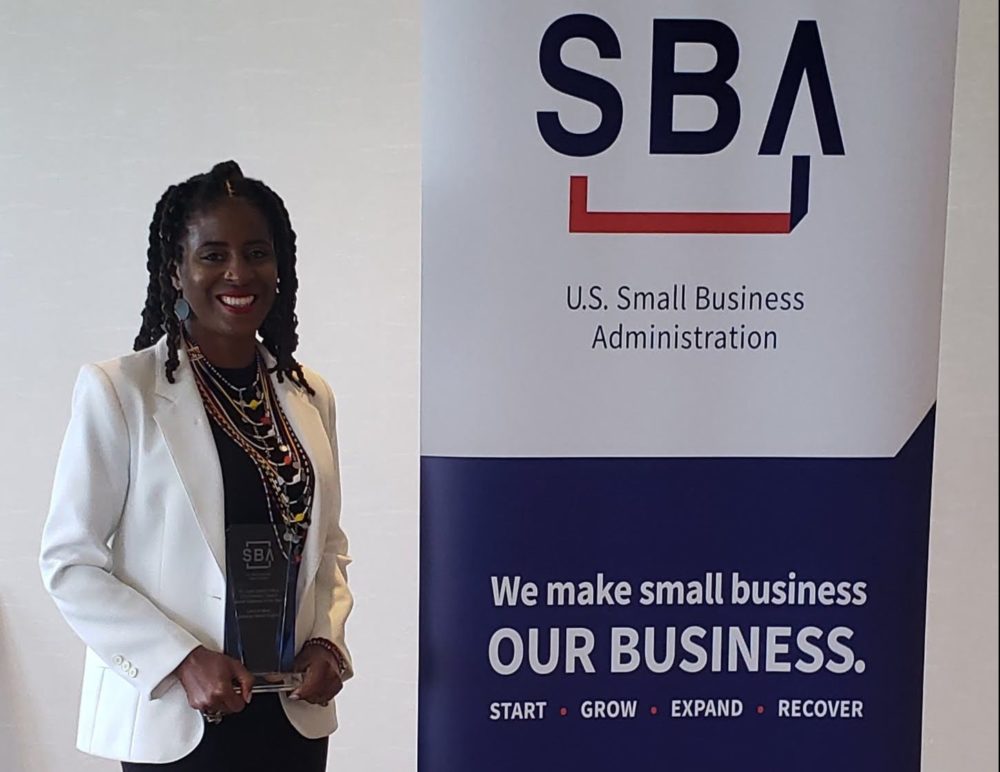[ad_1]
Tameka Stigers has achieved perpetual success as one of the country’s many black woman entrepreneurs.
She launched Locs of Glory in 2009 after discovering a niche styling technique known as “Sisterlocks” for people with textured hair. She started with a 400-square-foot salon in her home. But she outgrew the space fast, recognizing the need to expand and add more employees. She landed a $455,000 (7a) loan from the U.S. Small Business Administration in 2016. That capital allowed her to relocate into a custom-built 3,000-square-foot building in St. Louis to run her hair salon and spa business.
“The SBA loan has allowed me to provide employment opportunities for people in my community,” Stigers says.
Now, Stigers employs about 15 people and independent contractors and has realized steady sales growth since 2014. She expects to generate revenues of about $400,000 by late by 2020. She is part of the SBA St. Louis 2019 Emerging Leaders Initiative. This year she was named Minority-Owned Small Business of the Year by the SBA for her district in Missouri.
Many of the nation’s black-women business owners like Stigers are using loans to start or grow firms. Their efforts are helping the SBA reach double-digit dollar increases in loan approvals for those businesses.
Lending to black women entrepreneurs
The SBA’s 7(a) Loan Program, the agency’s primary and most common lending program, approved 1,412 loans for $334.1 million to African American women businesses, up 5% in the number of loans and a nearly 30% gain in dollar amount for the fiscal years 2018 and 2019 versus the prior two years. Businesses can use loans from the program for multiple purposes, including working capital, acquiring land or buying equipment.
Further, the SBA approved more than $19.6 million in loans to black-owned businesses this year, up 17% in dollar volume from 2018 and a robust rise of 34% from 2017. The SBA also approved 1,192 in (7a) and 504 loans for $740 million to women-owned businesses through September 2019, up 9% in the number of loans and a 7% rise in dollar volume from the same 2018 period. The 504 loans offer businesses long-term, fixed-rate financing for such purposes as buying land, acquiring existing buildings, or upgrading facilities.
The latest SBA data offers more evidence of how black-owned women small firms continue flourishing as one of the fastest-growing segments among all the nation’s nearly 30 million small businesses.
Plus, the SBA approved more than $20 million mircroloans to businesses owned by blacks this year, up 19% in dollar volume from the fiscal year 2018 and a robust rise of 36% from the fiscal year 2017. The average size of a microloan is just under $15,000. The loans typically are geared for startup and established firms with expansion plans.
Desperately seeking capital
Bill Manger, the SBA’s Associate Administrator for the Office of Capital Access, says the 504 Loan Program over the last year alone has seen an increase of 10% in the dollars going to women. He added the SBA is seeing many more women, including black women entrepreneurs, seeking capital to start a franchise.
“These are trends we’ve seen in the past couple of years that didn’t exist five years ago,” he says.
He attributes the SBA’s robust lending to many factors, including a strong economy helped by an unemployment rate for African Americans at an all-time low. Other contributors: Interest rates charged by banks are at low levels and there’s optimism with the economic outlook, causing some people to think now is a good time to start their business.
The SBA guarantees small business loans, provided through SBA-approved financial institutions such as banks, credit unions, and microlender intermediaries. The SBA does not provide direct loans to small businesses but rather guarantees a portion of the loan so that capital can be extended to a small business. The SBA’s guarantee is that the government will repay a portion of the loan to the lender. One challenge for startups, perhaps, is that the SBA requires a 10% equity injection or down payment to secure a loan. The requirement is not needed for an established business.
For those looking at pursuing a loan, Manger suggests that they put together a strong business plan that shows revenue projections and what potential capital needs for their business are going to be. Borrowers should show out about three years what the business will generate in revenue because one of the biggest things a lender will look at is the ability for the loan to be repaid.
The SBA’s local partners can offer entrepreneurs free counseling to help compile a polished small business plan.
[ad_2]
Source link

